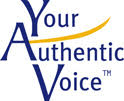 You’ve no doubt heard of using the SMART goal method to give you the best chance of meeting your goals. Have you heard of using SMART goals to create and deliver your next presentation? If not, you’re about to!
You’ve no doubt heard of using the SMART goal method to give you the best chance of meeting your goals. Have you heard of using SMART goals to create and deliver your next presentation? If not, you’re about to!
If you’ve been following my videos and blogs, you know I usually approach speaking creatively, focusing on speaking from your authentic voice. Yes, I present a structure to use when preparing your speech. Once you’ve answered the relevant data and research questions, and determined your core message, I lean heavily on stories, metaphors and presence.
What I love about the SMART goal method is how it can support you to focus your presentation based on what you want to accomplish for yourself, your organization and your audience, and get it done! The acronym, SMART, stands for:
• Specific: Increase the chances you can accomplish your presentation goals by making sure they’re well-defined. Determine the who, what, where, when and why.
• Measurable: Develop criteria for measuring progress toward your presentation goals. Detail the key indicators that help you decide if and when you reach your goal.
• Achievable: Create goals for your presentation that are attainable and achievable by ensuring you have the skills and resources to reach the goal.
• Relevant: Align your goals with the overall objectives of your organization.
• Time-bound: Give yourself a deadline for reaching your goals to provide a sense of urgency and to schedule the steps you plan to take.
So, let’s say you’re giving a presentation in a few months. How might this process apply?
• Specific: How much time do you have for the actual presentation? Are you including all the relevant pieces, such as a Q&A session? Who are you speaking to? What do you know about them? What do they need to know about you? When do you need to present this information? Why is it important to you and to them? Where can you make the greatest difference?
• Measurable: What do you need to focus on to create the best possible presentation? Your content? Your delivery? Your mindset? Where are you starting and how will you evaluate your progress? Is there an action you wish your audience to take that will help you determine your success?
• Achievable: What’s a reasonable goal for you to accomplish given the amount of time and resources you have? Do you need to hire a coach to partner with you to move powerfully through the process? (Just thought I’d throw that in there . . . )
• Relevant: How can your presentation support the goals of your organization? What information do you need to include to do that? Whose input or approval do you need?
• Time-bound: How much time are you allotting to create and rehearse your presentation? Are you overestimating to make sure you are fully prepared? Have you scheduled and blocked out the time on your calendar to allow for creative and rehearsal time? Are you including the time you need to develop your slides and your bio and share them with your meeting planner?
So, what’s so SMART about using SMART goals when you speak?
First, creating SMART goals will help you avoid the “I’ll just wing it” mistake. And it is a mistake, for oh so many reasons . . .
Second, creating SMART goals for your presentation development, delivery and meeting logistics allows you to take advantage of that wonderful “left” brain you have and use it for the purpose for which it was designed – analytical, linear thinking!
Third, creating SMART goals will take some of the uncertainty out of the presentation process, which is always welcome, and ensure you’re ready to meet your goals and delight your audience!
Don’t leave your presentation to chance. Plan to be SMART and make it a success! I would love to support you. I can be reached at Andrea@AndreaBeaulieu.com.

Leave A Comment